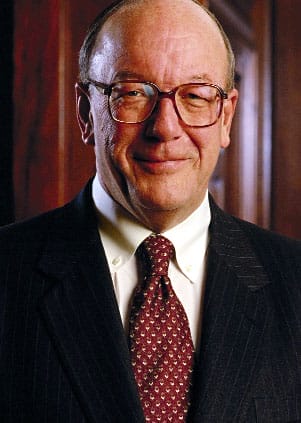 Lewis Platt began at Hewlett-Packard as an engineer in 1966. He retired more than 30 years later as CEO—the engineer of the company’s transformation.
Lewis Platt began at Hewlett-Packard as an engineer in 1966. He retired more than 30 years later as CEO—the engineer of the company’s transformation.
Known for his ethical business dealings, consensus building, and modest demeanor, Platt expanded the company into a portfolio of more than 80 divisions—from test-and-measurement equipment to printers to server-computers. From 1992, when he succeeded founder David Packard as chief executive, the Palo Alto company grew from $16.4 billion to $42 billion when he retired in 1999.
One of his last projects at Hewlett-Packard was to spin off Agilent Technologies, a landmark decision since splitting a successful company in two ran counter to the mergers and acquisitions craze of the time. The move divided Hewlett-Packard’s computer and printing business from the measurement business responsible for products such as semiconductor testing devices. The split became a model for other corporate divorces.
In the 1990s, he served on President Bill Clinton’s Advisory Committee on Trade Policy and Negotiations and as chairman of the World Trade Organization Task Force. At Platt’s 1999 retirement party, he handed out French corkscrews to guests inscribed with the words “Gone Fishing.” Instead of fishing, he put those corkscrews to use at Kendall-Jackson Wine Estates, where he spent a time as CEO of that small, privately run winery.
Platt returned to the corporate big-time in 2003 as non-executive chairman of a recovering American icon: The Boeing Company. The company’s earnings were down, it had lost market share to Airbus, and it had shed some 4,000 commercial jobs in recent years. “I think we’ve made a lot of progress,” Platt said in 2005. Investors who listened benefited—the following year, Boeing overtook misstepping rival Airbus to become the largest aircraft manufacturer for the first time since 2000. Platt, who died in 2005, was a Wharton Overseer and helped to found Wharton West, Wharton’s first-ever permanent, out-of-state campus location.


























